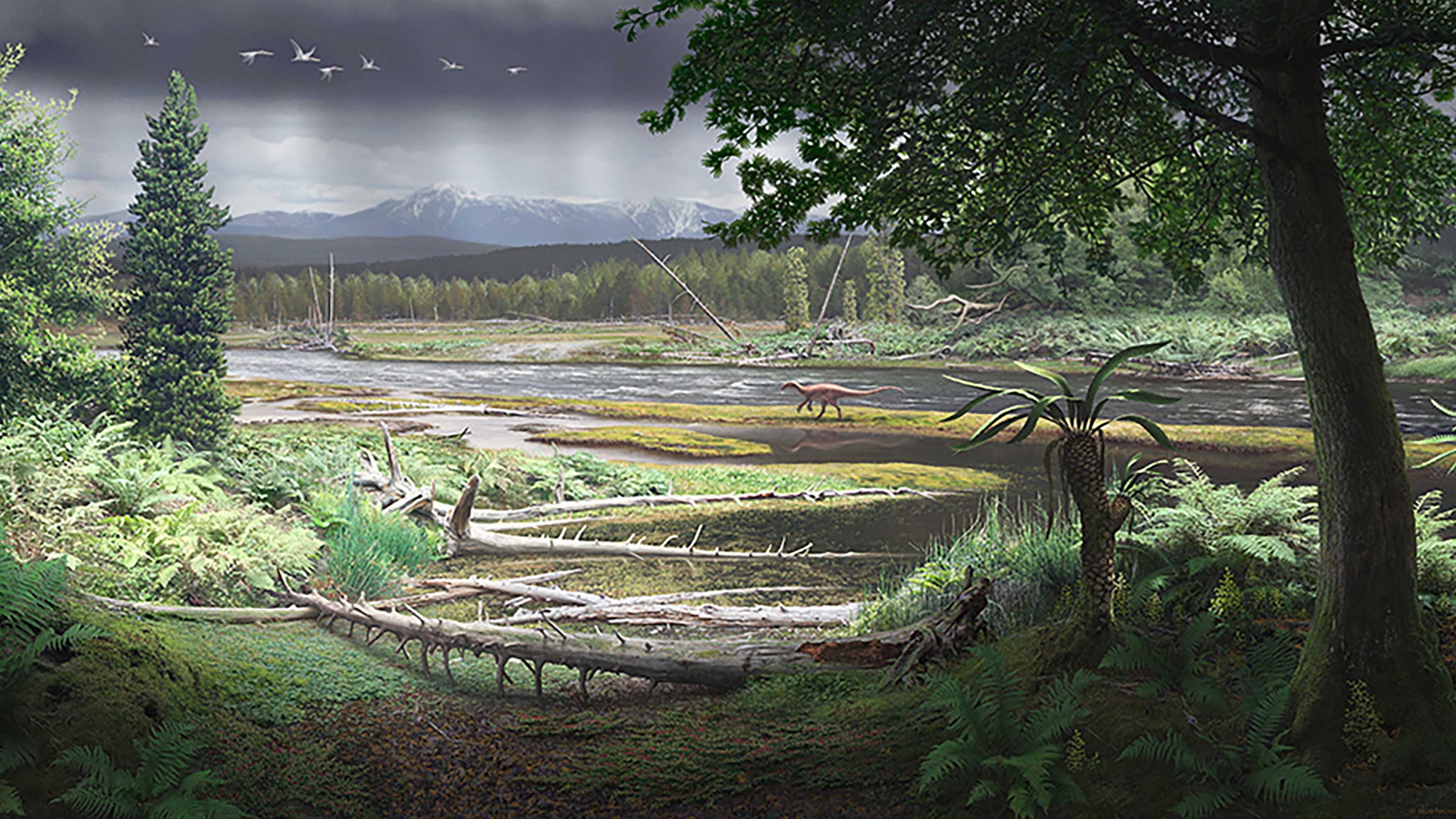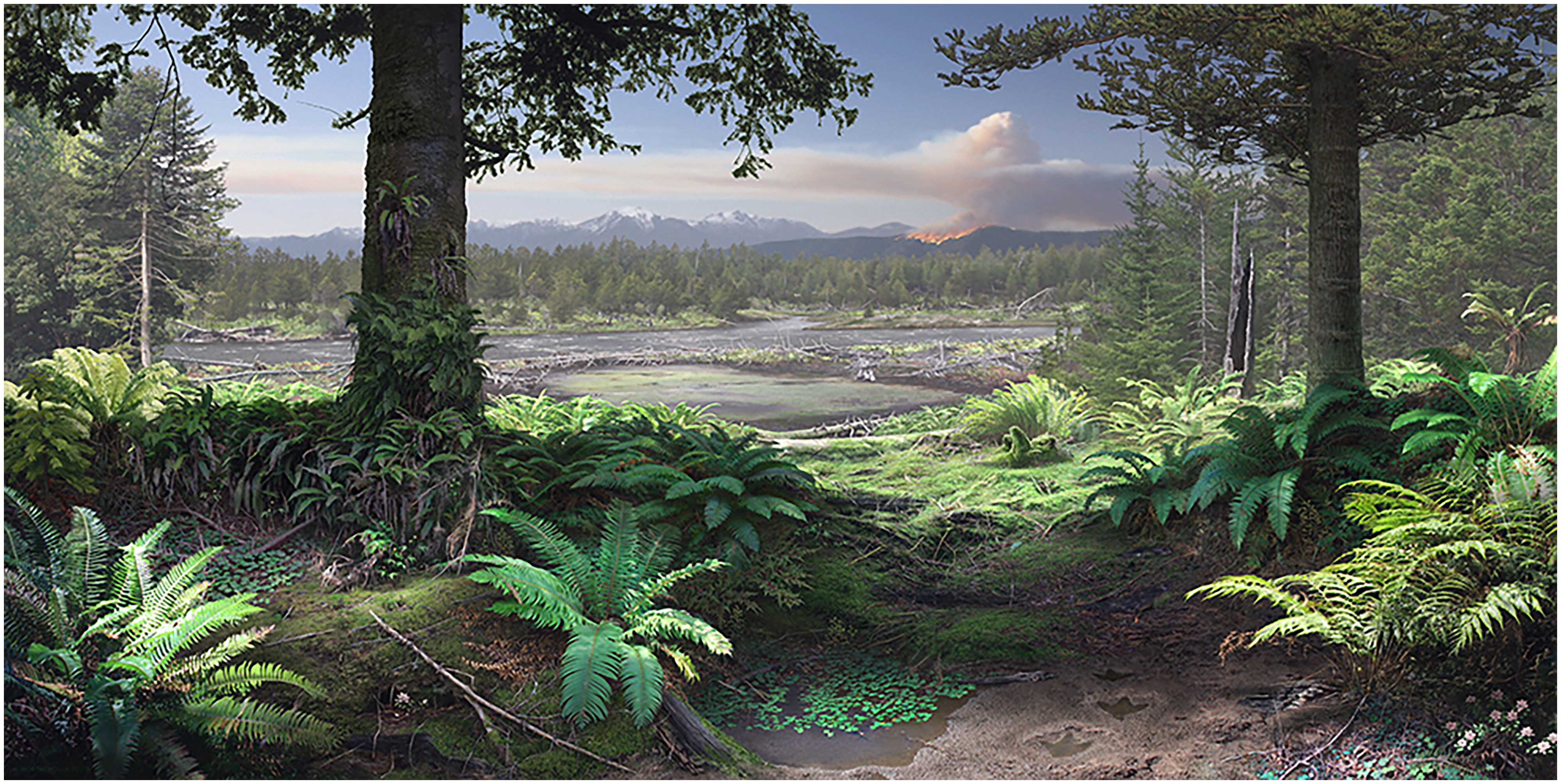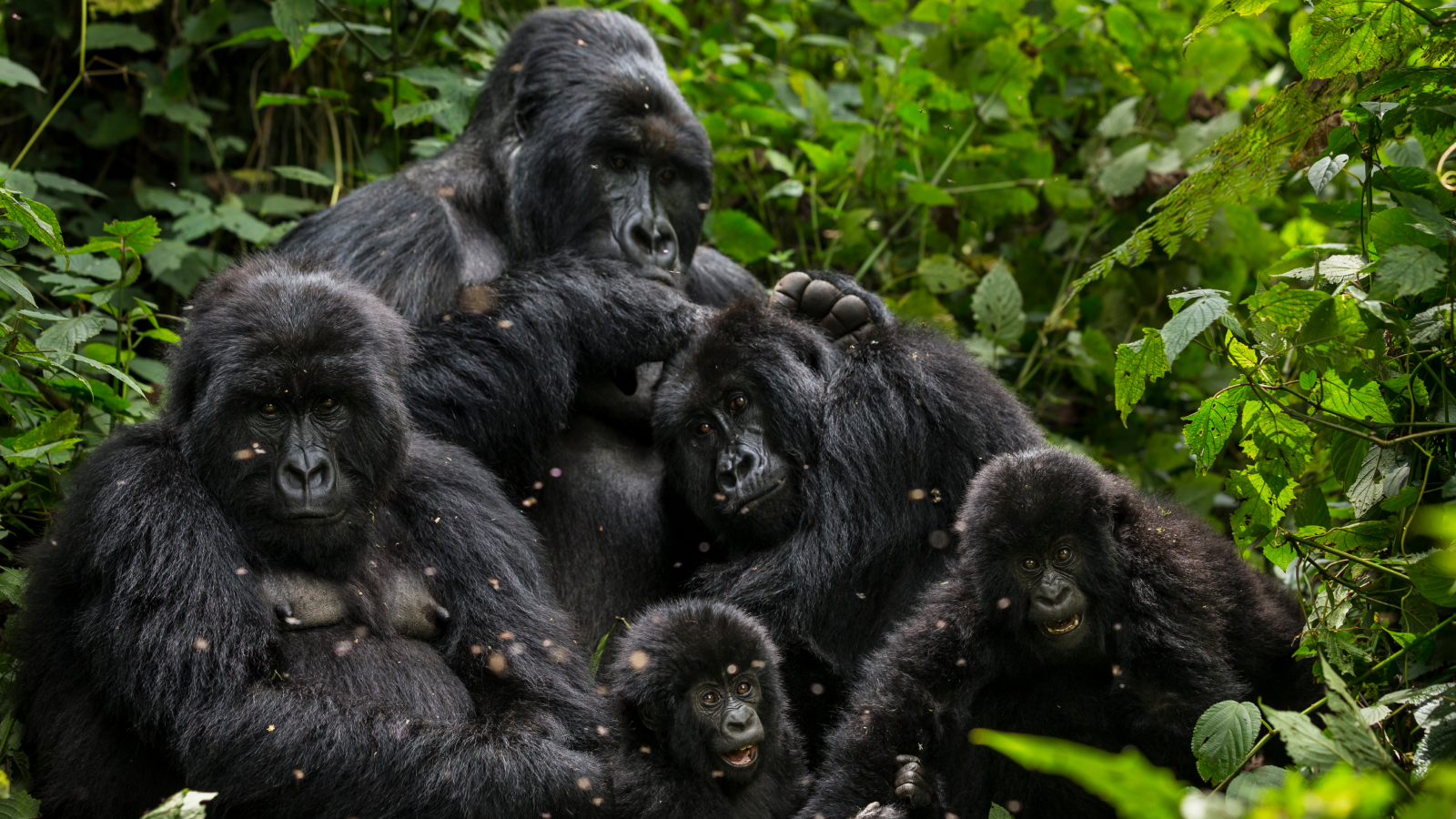See the reconstructed home of 'polar dinosaurs' that thrived in the Antarctic 120 million years ago
Fossil sites in Australia hold pollen and spores from the dinosaur age, when the island straddled the Antarctic Circle. Now, scientists have re-created the habitat of "polar dinosaurs," using these plant remains.

Australia is rather isolated today, but around 120 million years ago, the island straddled the polar circle and formed a giant landmass with Antarctica. At that time, dinosaurs lived on this landmass — and thanks to a new study, we now know what their habitat looked like.
New illustrations show that "polar dinosaurs" roamed cool-temperate forests crisscrossed by rivers and carpeted with large ferns. These dinosaurs included small ornithopods — herbivorous dinosaurs with beaks and cheeks full of teeth — and small theropods, which were mostly carnivorous dinosaurs that walked on two legs and often had feathers, one of the study's authors wrote in The Conversation.
"What is now Victoria was once within the polar circle, up to 80 degrees south of the equator and shrouded in darkness for months at a time," wrote co-author Vera Korasidis, a lecturer in environmental geoscience at the University of Melbourne and a research associate at the Smithsonian's National Museum of Natural History. "Despite these harsh conditions, dinosaurs thrived here, leaving behind evidence of their existence at various palaeontological sites."
The amount of sunlight reaching the Antarctic Circle has remained the same over the eons, but the climate was much balmier during the Cretaceous period (145 million to 66 million years ago) than it is today, with temperatures averaging between 11 and 25 degrees Fahrenheit (6 to 14 degrees Celsius) warmer than current temperatures. The Early Cretaceous (140 million to 110 million years ago), in particular, stands out as one of the warmest periods in the past 500 million years of Earth's history, Korasidis wrote, ruling out the existence of polar ice caps.
Related: Dinosaurs might still roam Earth if it weren't for the asteroid, study suggests
Paleontologists have been studying rocks containing dinosaur fossils from the southern Australian state of Victoria for decades, but they have also been analyzing microscopic spores and pollen grains that may be from plant life that existed near the South Pole during the Early Cretaceous, Korasidis wrote.
For the new study, Korasidis and her co-author Barbara Wagstaff, a pollen and spore specialist at the University of Melbourne, examined nearly 300 pollen and spore samples from 48 sites along the Victoria coast. These samples, which date to between 130 million and 110 million years ago, shed light on the evolution of forests and floodplains where dinosaurs lived, Korasidis wrote.
Get the world’s most fascinating discoveries delivered straight to your inbox.

The researchers published their findings and the first-ever reconstructions of Early Cretaceous polar landscapes Wednesday (May 7) in the journal Alcheringa.
Ancient conifers made up most of the forest canopy, while ferns — specifically, scaly tree ferns (Cyatheaceae), forked ferns (Gleicheniaceae) and another group of primitive ferns (Schizaeaceae) — dominated the understory, according to the study. The researchers noticed an abundance of flowering plants appeared starting around 113 million years ago, which agrees with the timing of the proliferation of flowering plants globally.
"The appearance of flowering plants in the landscape resulted in the extinction of numerous understorey plants," Korasidis wrote in The Conversation. "As a result, by 100 million years ago, the forests of Victoria included an open conifer-dominated forest canopy. Flowering plants and ferns featured in the understorey, alongside liverworts, hornworts, lycophytes and sphagnum-like mosses."
The changing vegetation likely influenced dinosaurs, with many expanding their diet to include flowering plants by the end of the Cretaceous, according to Smithsonian magazine.

Sascha is a U.K.-based staff writer at Live Science. She holds a bachelor’s degree in biology from the University of Southampton in England and a master’s degree in science communication from Imperial College London. Her work has appeared in The Guardian and the health website Zoe. Besides writing, she enjoys playing tennis, bread-making and browsing second-hand shops for hidden gems.
You must confirm your public display name before commenting
Please logout and then login again, you will then be prompted to enter your display name.


